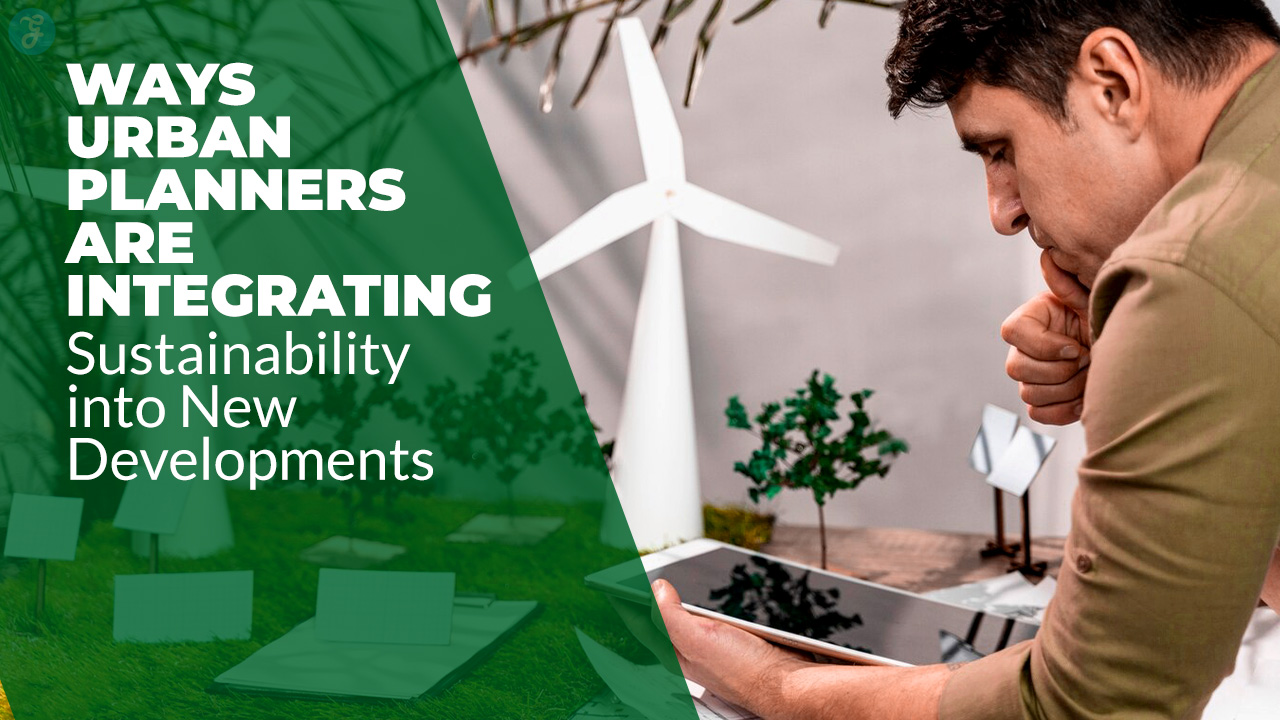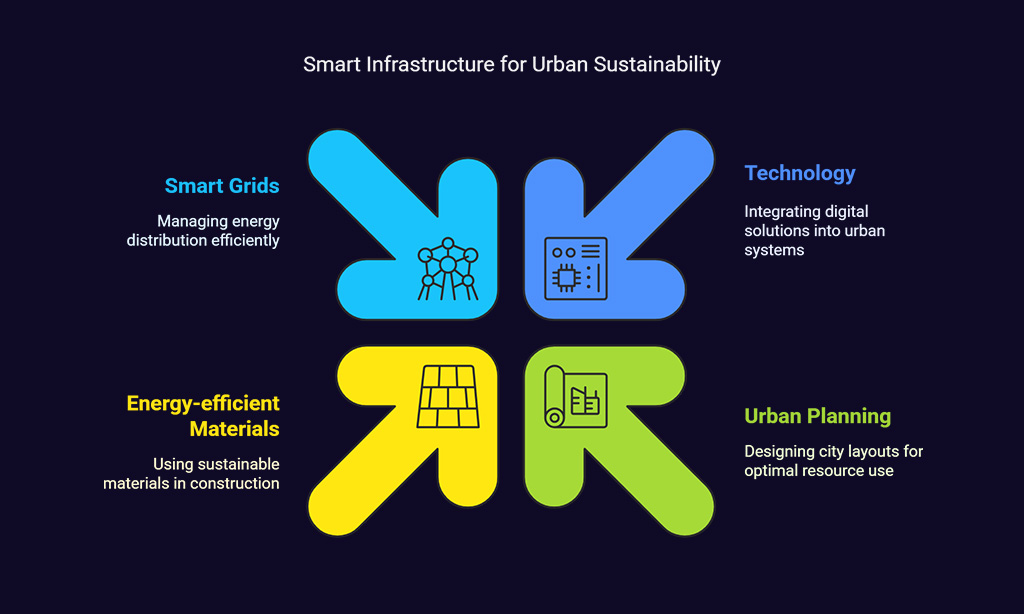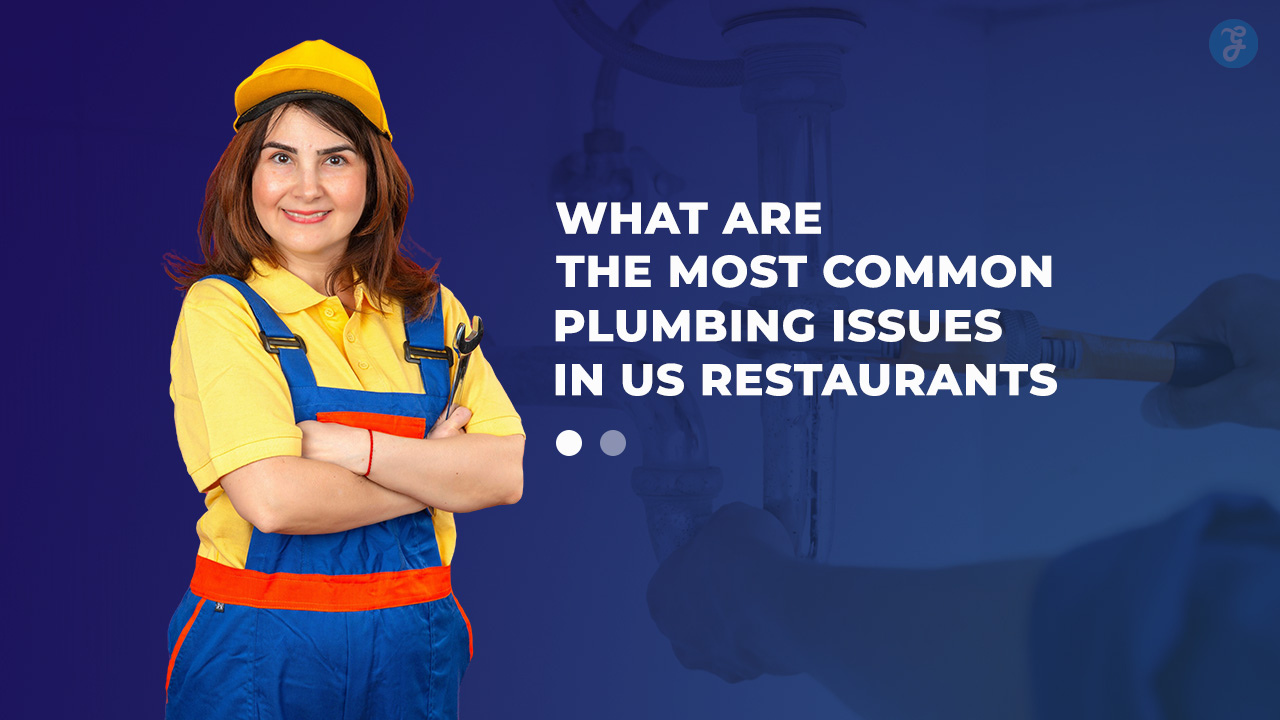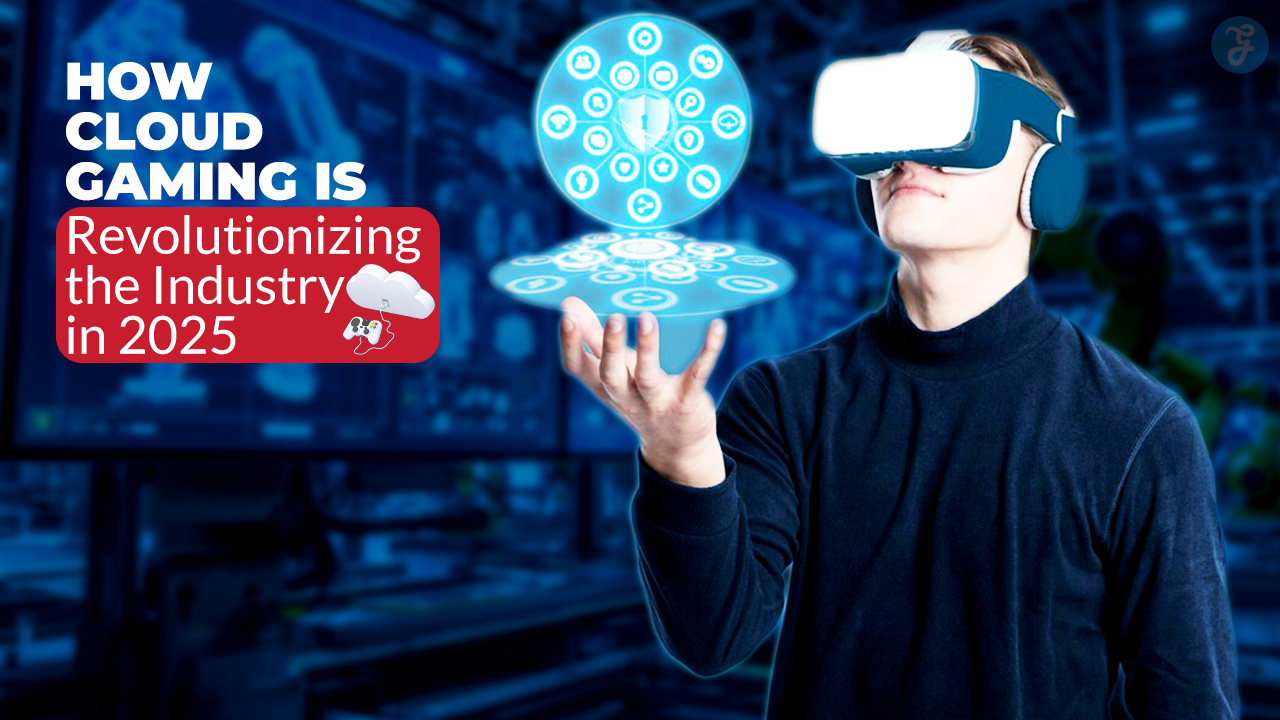Urbanization continues to grow at an unprecedented rate, with the United Nations predicting that nearly 68% of the global population will live in urban areas by 2050.
This rapid shift to cities presents significant challenges related to resource management, waste, pollution, and infrastructure. However, it also offers a unique opportunity to build cities that are sustainable, resilient, and equitable.
As urban planners face these challenges, they are integrating sustainability into new developments through innovative technologies, green building practices, and forward-thinking policies. The role of urban planners is to design cities that not only meet the needs of today but also protect the planet for future generations.
In this article, we explore 12 ways urban planners are integrating sustainability into new developments, highlighting practical solutions that can transform urban landscapes.
1. Implementing Green Building Standards
Urban planning today is significantly influenced by green building standards, which are designed to ensure that new buildings are as energy-efficient, resource-conserving, and environmentally friendly as possible. By adhering to certifications such as LEED (Leadership in Energy and Environmental Design), urban planners can reduce the environmental impact of construction and promote a healthier, more sustainable living environment.
Benefits of LEED Certification
- Energy Efficiency: LEED-certified buildings are designed to consume less energy, reducing both operational costs and carbon emissions.
- Water Conservation: Incorporating rainwater harvesting systems and efficient plumbing helps reduce water usage.
- Healthier Indoor Environments: Improved air quality and natural lighting contribute to the well-being of building occupants.
Examples of Green Building Initiatives
Many cities are now incorporating green building certifications into their urban plans. For instance, the Bullitt Center in Seattle is one of the greenest commercial buildings in the world. Designed with the Living Building Challenge, it features solar panels, composting toilets, and a rainwater collection system that makes it fully self-sufficient in terms of water and energy.
| Feature | Benefit |
| Energy-efficient materials | Reduces energy consumption by up to 50% |
| Solar panels | Generates renewable energy on-site |
| Green roofs and insulation | Promotes natural cooling and reduces heating |
| Water-efficient systems | Saves up to 40% of water usage |
2. Incorporating Renewable Energy Solutions
Renewable energy is a critical element in reducing the carbon footprint of urban developments. By integrating solar, wind, and geothermal energy into new buildings, urban planners are moving away from fossil fuels and towards cleaner, more sustainable sources of power.
Solar Power in Urban Settings
Cities like Los Angeles have become pioneers in solar energy integration. Planners are increasingly designing rooftops with solar panels to generate electricity, and some neighborhoods even have shared solar installations. These systems reduce the overall demand for grid power and lower greenhouse gas emissions.
Wind and Geothermal Energy for Buildings
In addition to solar energy, cities are tapping into wind and geothermal resources. For example, the city of Copenhagen is utilizing wind turbines along its coastline to generate electricity, while geothermal energy is being used to provide heating and cooling to some residential neighborhoods in Reykjavik, Iceland.
| Energy Source | Key Benefits | Examples |
| Solar Power | Reduces electricity costs, minimizes grid dependency | Los Angeles, California |
| Wind Energy | Clean, renewable source, scalable for cities | Copenhagen, Denmark |
| Geothermal Power | Efficient heating and cooling systems | Reykjavik, Iceland |
3. Promoting Walkable and Bike-Friendly Cities
Creating walkable cities and promoting cycling is a sustainable approach that reduces reliance on cars, minimizes air pollution, and improves residents’ health. Urban planners are focusing on reducing car dependency and enhancing public transport systems to make cities more pedestrian-friendly.
Designing Pedestrian-Friendly Streets
Cities like Copenhagen and Amsterdam are leaders in pedestrian-friendly design, with wide, car-free streets, ample sidewalks, and abundant public spaces. In these cities, planners are incorporating traffic calming measures and prioritizing pedestrians, which encourages walking and cycling.
Creating Safe Bike Lanes
Cities that are actively improving their cycling infrastructure include Bogotá, Colombia, which has expanded its cycling network, and Portland, Oregon, which integrates cycling lanes within urban neighborhoods. The goal is to ensure that people feel safe biking through the city.
| Design Element | Impact | Examples |
| Wide pedestrian sidewalks | Encourages walking and reduces car usage | Copenhagen, Denmark |
| Dedicated bike lanes | Reduces bike accidents and increases usage | Bogotá, Colombia |
| Car-free zones | Promotes sustainable transportation options | Amsterdam, Netherlands |
4. Enhancing Public Transportation Networks
Public transportation plays a vital role in reducing the environmental impact of urban growth. Expanding and improving public transit options is one of the most effective ways to reduce traffic congestion and lower carbon emissions from cars.
Integrating Eco-Friendly Buses and Trams
Public transit systems around the world are adopting electric buses and low-emission trams. For instance, London and Paris have introduced electric buses into their fleets, significantly reducing air pollution and offering a cleaner way for people to travel through the city.
The Role of Light Rail in Sustainable Cities
Light rail systems are growing in popularity as a sustainable alternative to traditional forms of transportation. Cities like Los Angeles and Seattle have made significant investments in light rail networks, which reduce congestion and provide a fast, affordable, and eco-friendly mode of transport.
| Public Transit Feature | Benefit | Examples |
| Electric buses | Lower emissions, quieter, energy-efficient | London, UK, Paris, France |
| Light rail systems | Reduces traffic congestion and pollution | Los Angeles, USA |
| Bicycle-sharing programs | Encourages alternative transportation | New York, USA |
5. Green Spaces and Urban Forests
Urban green spaces provide essential ecological and psychological benefits, such as improving air quality, reducing heat, and supporting biodiversity. Urban planners are increasingly integrating parks, forests, and green roofs into city designs to improve overall urban health.
The Environmental and Social Benefits of Green Spaces
Research shows that urban green spaces have measurable benefits, including reduced stress, enhanced mental health, and improved air quality. Cities like New York have led the way with expansive public parks like Central Park, while others like Singapore are implementing rooftop gardens across buildings to maximize green space in densely populated areas.
Planning Urban Forests and Parks
Urban forests and parks also provide much-needed resilience against climate change by absorbing CO2 and improving the city’s climate response. The city of Vancouver, for instance, has implemented its Greenest City Action Plan, which includes increasing urban forests and green spaces.
| Green Space Type | Benefit | Examples |
| Urban Parks | Improves air quality, boosts health | Central Park, New York |
| Green Roofs | Reduces heat island effect, insulation | Singapore, Singapore |
| Urban Forests | Enhances biodiversity, mitigates flooding | Vancouver, Canada |
6. Sustainable Water Management
As climate change exacerbates water scarcity, urban planners are increasingly focusing on sustainable water management practices. Effective water management strategies, such as rainwater harvesting and efficient irrigation, can significantly reduce the strain on municipal water systems.
Rainwater Harvesting Systems
Cities in water-scarce regions, such as Cape Town, South Africa, are integrating rainwater harvesting systems into urban infrastructure. This allows for the collection and storage of rainwater to be used for irrigation, landscaping, or even potable water needs.
Smart Irrigation Techniques
Smart irrigation systems use technology to optimize water usage in urban landscaping, ensuring that water is used only when needed. Cities like Barcelona have adopted smart irrigation systems that reduce water waste while maintaining lush public spaces.
| Water Management System | Benefit | Examples |
| Rainwater harvesting | Reduces reliance on municipal water supply | Cape Town, South Africa |
| Smart irrigation systems | Efficiently manages water use in landscapes | Barcelona, Spain |
7. Waste Reduction and Circular Economy Practices
The concept of a circular economy is based on rethinking waste and resource management. By designing cities where waste is minimized and products are reused, urban planners help reduce landfill dependence and encourage a more sustainable consumption model.
Zero-Waste Development Models
Cities like Kamikatsu, Japan, have become pioneers in the zero-waste movement. Kamikatsu aims to recycle 100% of its waste by sorting waste into 45 categories. By focusing on reduction and recycling, urban planners can significantly reduce the environmental impact of urban growth.
Recycling and Composting Initiatives
Urban planners are integrating recycling and composting systems into new developments, ensuring that materials like organic waste, metals, and plastics are reused. Cities like San Francisco have implemented mandatory composting programs, reducing landfill waste by over 50%.
| Waste Management Strategy | Benefit | Examples |
| Zero-waste initiatives | Reduces landfill waste, promotes reuse | Kamikatsu, Japan |
| Recycling programs | Reduces waste, saves energy, and materials | San Francisco, USA |
| Composting systems | Converts organic waste into usable compost | Toronto, Canada |
8. Smart Infrastructure for Sustainable Growth
Smart infrastructure combines technology with urban planning to optimize resource use and improve sustainability. From energy-efficient building materials to smart grids, these technologies help cities use fewer resources while improving overall urban efficiency.
Sustainable Building Materials
Urban planners are incorporating sustainable building materials, such as recycled steel, bamboo, and natural stone, into new developments. These materials reduce environmental impact during construction and offer longer-lasting durability.
Smart Grids and Sustainable Energy Use
Smart grids are transforming how cities manage their energy use. These grids use sensors and real-time data to optimize energy distribution, improve efficiency, and support renewable energy integration. Cities like Austin, Texas, have implemented smart grids that help reduce peak energy demand and incorporate solar and wind energy more effectively.
| Smart Infrastructure | Benefit | Examples |
| Sustainable building materials | Reduces resource consumption, eco-friendly | New York, USA |
| Smart grids | Efficient energy management, supports renewables | Austin, Texas, USA |
9. Incorporating Climate Resilience into Urban Planning
Climate change poses a growing threat to cities, with increased risk of flooding, heatwaves, and storms. Urban planners are increasingly integrating climate resilience strategies to ensure that cities can withstand and adapt to these challenges. This includes designing infrastructure that can handle extreme weather events and implementing policies that reduce climate-related vulnerabilities.
Flood-Resilient Infrastructure
Cities located in flood-prone areas are prioritizing flood-resilient infrastructure to prevent damage from rising sea levels and intense rainfall. For example, planners in New Orleans have introduced green infrastructure systems, including wetlands and permeable pavements, that can absorb excess water during storms.
Heat Island Mitigation Strategies
Urban heat islands (UHI) are areas where temperatures are significantly higher than surrounding rural areas due to human activities and dense infrastructure. Cities like Los Angeles are adopting heat island mitigation strategies such as the implementation of cool roofs and green spaces to cool down urban environments.
| Climate Resilience Strategy | Benefit | Examples |
| Green Infrastructure | Absorbs excess water, reduces flood risks | New Orleans, USA |
| Cool roofs and green spaces | Mitigates urban heat islands, improves comfort | Los Angeles, USA |
| Coastal protection infrastructure | Reduces storm surge and flooding risks | Miami, USA |
10. Advancing Smart Water Management Systems
As water scarcity continues to be a global issue, urban planners are adopting smart water management systems that optimize water usage and reduce waste. By using technology and data analytics, these systems ensure that water resources are used efficiently, particularly in drought-prone areas.
Smart Metering and Leak Detection
Smart water meters and leak detection systems are becoming common in many cities, allowing for real-time monitoring of water usage and rapid detection of leaks. Cities like London and Singapore are leaders in smart water systems, using sensors to ensure efficient water delivery while preventing waste.
Water Recycling and Reuse
Water recycling is another essential component of sustainable water management. Cities such as Singapore have implemented extensive water recycling programs, using treated wastewater for industrial, agricultural, and even potable purposes, ensuring that water is used sustainably.
| Water Management Technology | Benefit | Examples |
| Smart water meters | Enables real-time monitoring of water usage | London, UK |
| Leak detection systems | Minimizes water loss and waste | Singapore, Singapore |
| Water recycling and reuse | Reduces freshwater consumption | Singapore, Singapore |
11. Fostering Community Participation in Sustainable Urban Design
Urban planning that focuses on sustainability is most effective when it involves the community in the decision-making process. By engaging residents, local businesses, and stakeholders in the development of sustainable practices, urban planners can create designs that meet the needs of the people while ensuring long-term environmental benefits.
Inclusive and Participatory Planning
Cities like Portland, Oregon, have implemented community-led sustainability programs, where residents actively participate in shaping urban development decisions. This collaborative approach ensures that diverse perspectives are considered, leading to more effective and inclusive solutions.
Urban Agriculture and Food Systems
Urban agriculture is another sustainable practice that empowers communities while addressing food insecurity. Cities like Detroit have seen the rise of urban farming initiatives, where vacant lots are transformed into community gardens that supply fresh produce to local neighborhoods.
| Community Engagement Strategy | Benefit | Examples |
| Participatory planning | Ensures inclusive, locally relevant solutions | Portland, Oregon, USA |
| Urban agriculture | Reduces food insecurity and promotes local food | Detroit, Michigan, USA |
| Community gardens | Provides green spaces and fosters community ties | New York City, USA |
12. Leveraging Technology for Sustainable Urban Development
The integration of advanced technologies plays a crucial role in creating more sustainable, efficient, and livable urban environments. From the use of big data to the implementation of the Internet of Things (IoT), urban planners are harnessing technology to improve resource management, reduce energy consumption, and make cities more resilient.
Big Data and Predictive Analytics
Urban planners are increasingly using big data and predictive analytics to optimize resource usage, predict future demands, and design cities that are more adaptable to change. For example, Barcelona uses data-driven insights to optimize traffic flow, reduce waste, and improve public transportation scheduling.
The Role of IoT in Smart Cities
The Internet of Things (IoT) is transforming cities by enabling real-time monitoring and control of various systems, from lighting to waste collection. Amsterdam has become a leader in this field, with its “Smart City” initiative, which connects everything from streetlights to waste bins to an intelligent, centralized network for better resource management.
| Technology Integration | Benefit | Examples |
| Big data and predictive analytics | Optimizes city operations, improves efficiency | Barcelona, Spain |
| IoT systems | Real-time monitoring for better resource management | Amsterdam, Netherlands |
| Smart infrastructure | Reduces energy consumption and enhances sustainability | Singapore, Singapore |
Wrap Up: Shaping Greener Cities for the Future
Urban planners integrating sustainability into new developments are crucial in addressing the growing challenges faced by modern cities. From renewable energy solutions to the promotion of walkable cities, urban planners are creating a blueprint for sustainable urban development that minimizes environmental impact, reduces resource consumption, and enhances the quality of life for urban dwellers.
As cities around the world continue to grow, it is essential that planners adopt these sustainable strategies to ensure that future generations inherit vibrant, resilient, and sustainable urban spaces.
Whether through green buildings, efficient public transportation, or advanced water management systems, urban planners integrating sustainability into new developments hold the key to creating cities that are not only livable but also environmentally responsible.








































